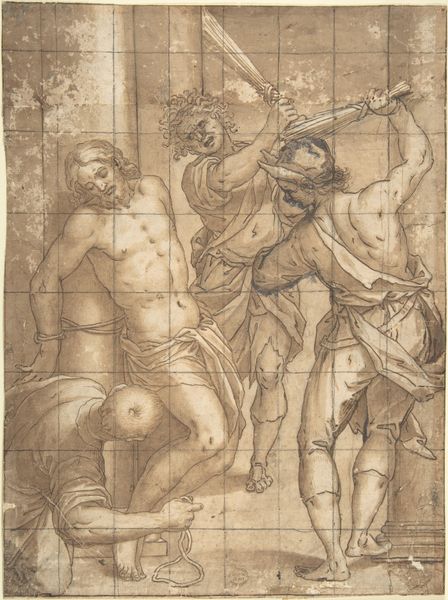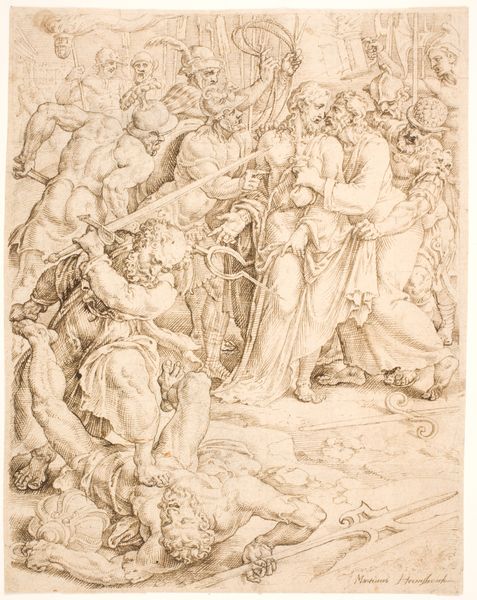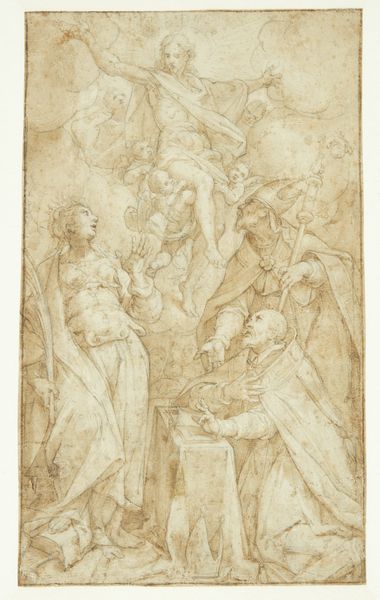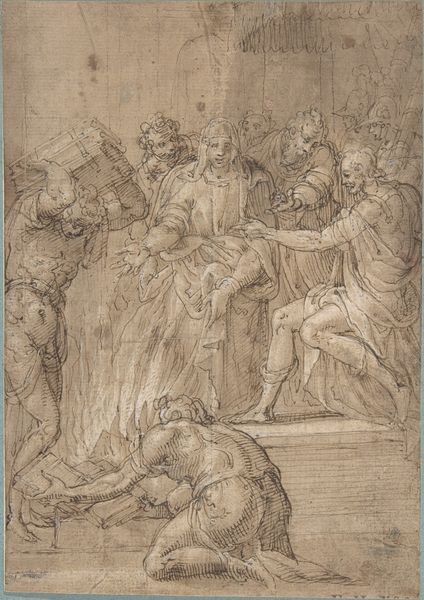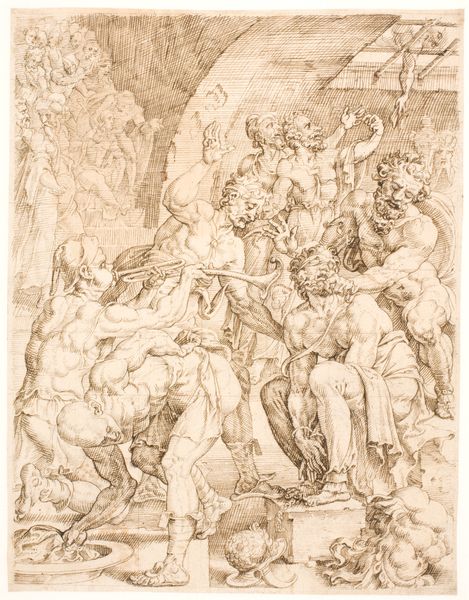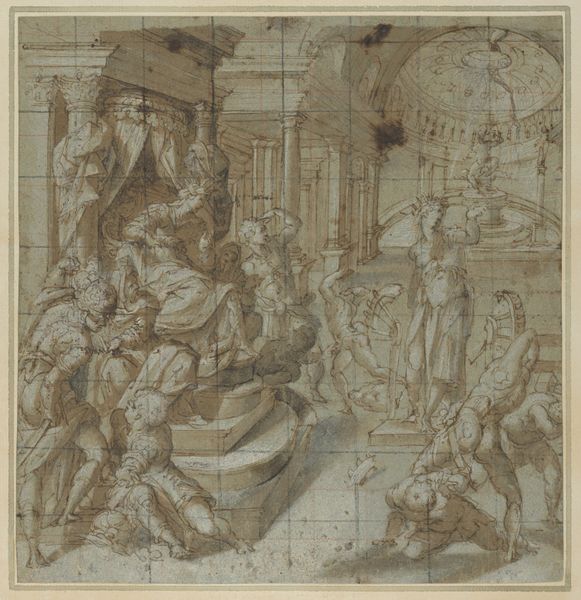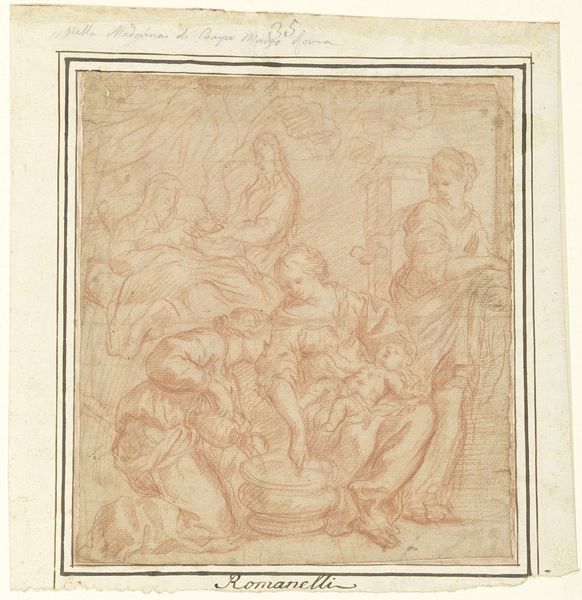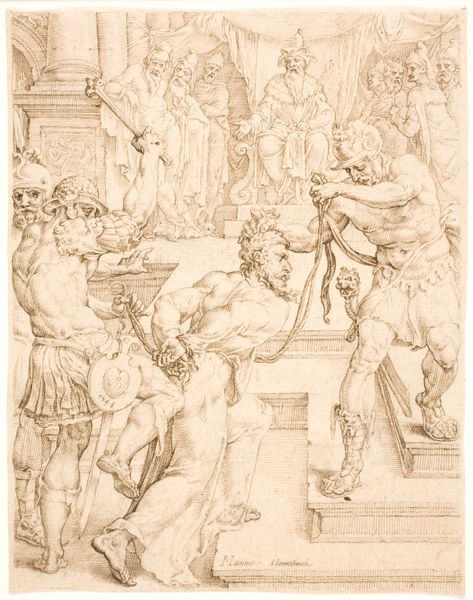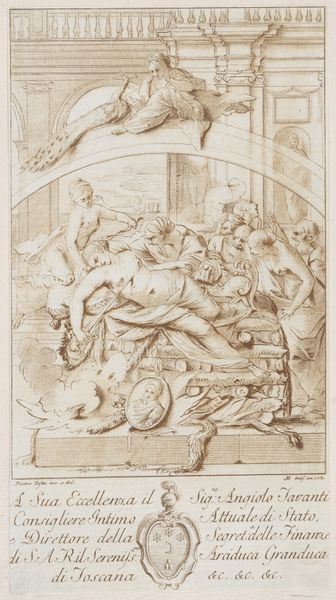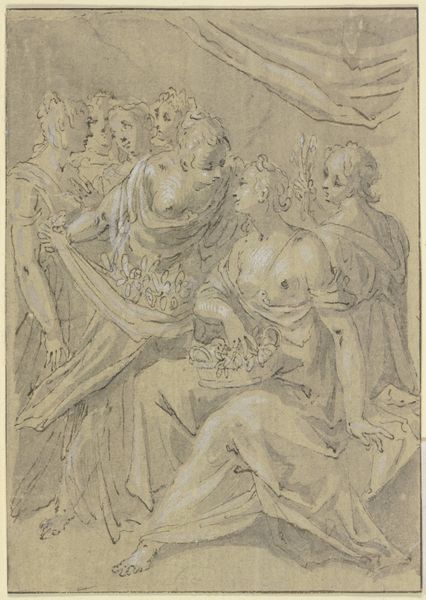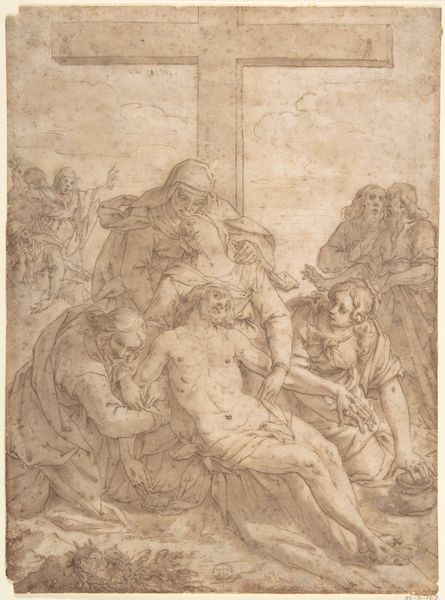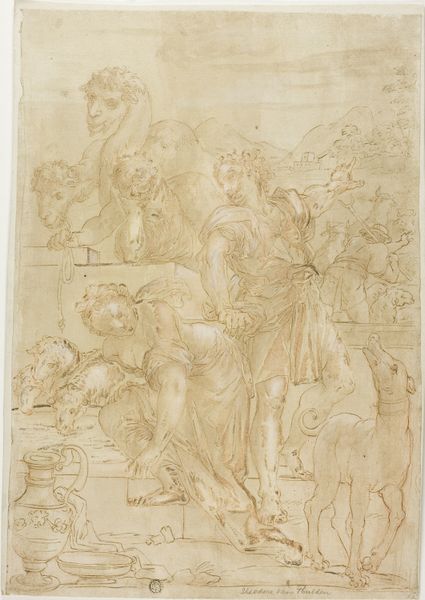
drawing, paper, ink, charcoal
#
drawing
#
narrative-art
#
charcoal drawing
#
figuration
#
paper
#
11_renaissance
#
ink
#
charcoal
#
history-painting
Dimensions: 289 × 242 mm
Copyright: Public Domain
Curator: Welcome. We’re standing before “Deposition,” a work on paper created by Luca Penni between 1540 and 1546. It’s done with ink and charcoal. What are your first thoughts? Editor: Haunting. It's got this delicate but raw feel. The gray tones and soft lines give it a ghost-like quality, like a fading memory of intense suffering. But then I notice the grid. It brings you back to the intent: A preparatory grid suggests that this evocative piece might be a detailed under-drawing for a larger work of art. Curator: Exactly. Consider the era: during the Renaissance, many artists planned out large-scale paintings with these highly detailed drawings. It allowed for accuracy and precision when transferring the composition. This preparation was also tied into ideas about craft, skill, and social advancement, establishing painting as a high art. Editor: Craft, for sure. Look at the way Penni uses shadow to sculpt the bodies. The folds of fabric have so much volume—and grief. It's incredibly moving. I think, sometimes, that the underdrawings actually contain something lost in the finished product; you sense the spark before it's glazed over with paint. The emotional weight really gets you. Curator: It’s also interesting to consider how religious imagery, like the Deposition scene, served as a form of visual communication. Artists weren't just creating aesthetically pleasing images but also conveying religious messages and solidifying the church's power. That is, even a preliminary sketch contributes to a culture. Editor: Sure, art has always played that role, consciously or unconsciously, propping up the power structures of the day. I just wonder how conscious Luca Penni was of that in the intimate moment of drawing, wrestling with line and shadow. Even with the religious framework, the personal struggle of creation bleeds through. Look at the grief etched on the faces of the figures supporting Christ; it's palpable. Curator: Absolutely. Ultimately, examining “Deposition” provides a glimpse into the multifaceted relationship between the artist, their technique, and the socio-political context in which they operated. It’s also an excellent teaching tool, providing insights into studio practices during the period. Editor: It's a masterclass in using minimal means to evoke maximum emotion. You see so clearly how much careful consideration and care went into its making. The tools near Christ—crown of thorns, the hammer—bring us so sharply back to a visceral act, one of brutal, material making. The raw physicality is there on the page, laid bare.
Comments
No comments
Be the first to comment and join the conversation on the ultimate creative platform.
